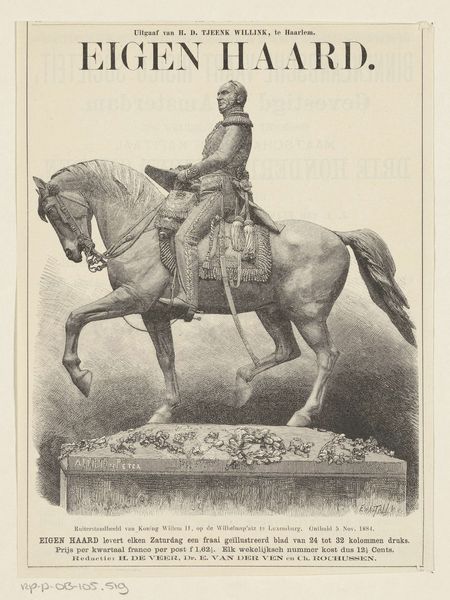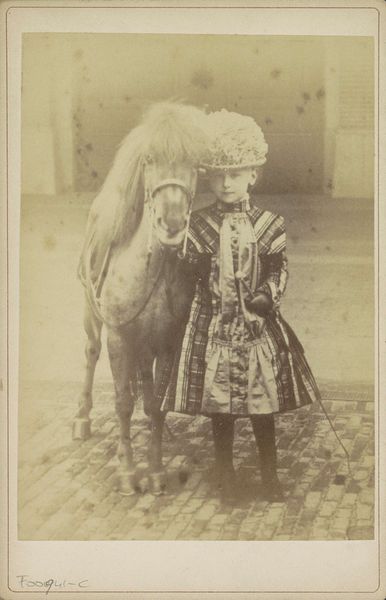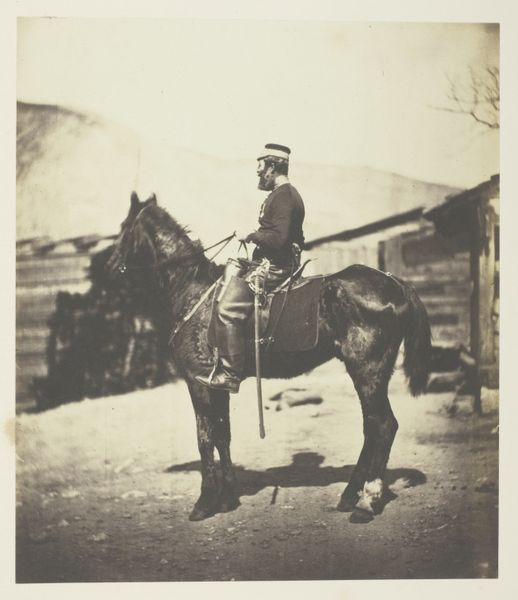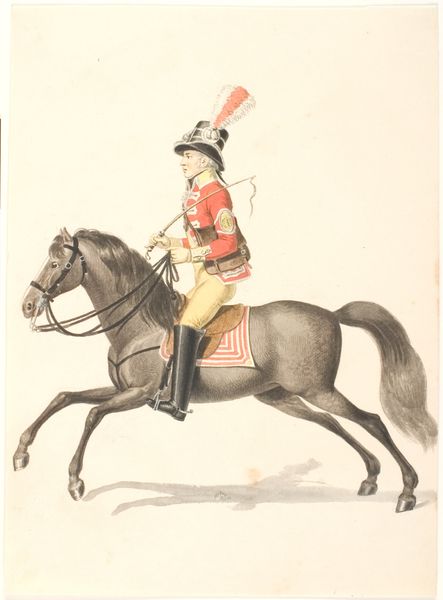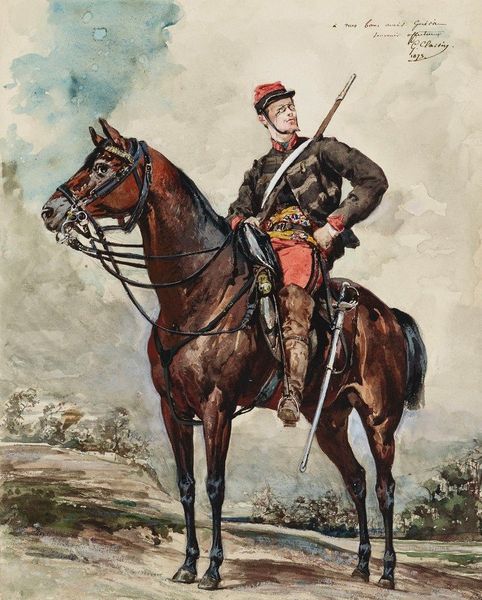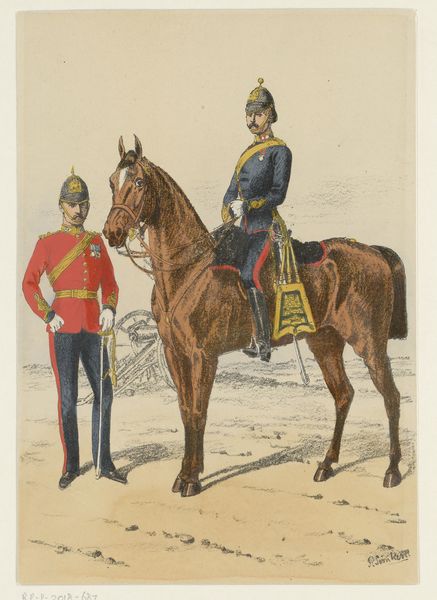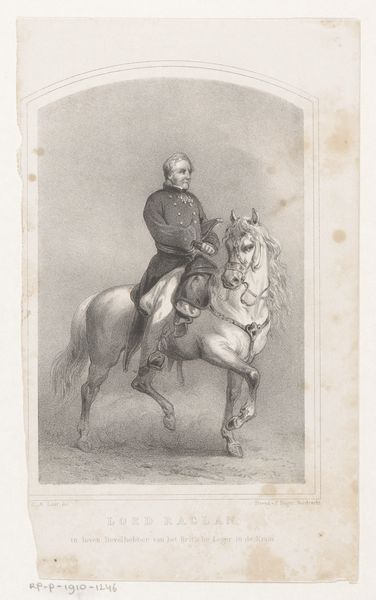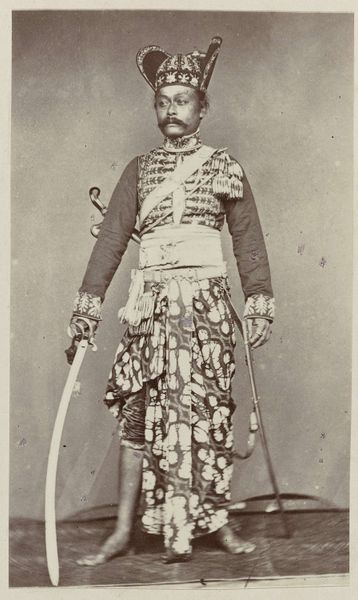
photography, albumen-print
#
portrait
#
landscape
#
photography
#
orientalism
#
19th century
#
albumen-print
Dimensions: height 92 mm, width 56 mm
Copyright: Rijks Museum: Open Domain
Editor: Here we have an albumen print by Woodbury & Page, dating sometime between 1865 and 1890, titled "Jonge Javaanse vorst te paard" – "Young Javanese Prince on Horseback". I’m immediately struck by the contrast between the formality of the prince’s attire and the more naturalistic pose of the horse. How do you interpret this work? Curator: This photograph, while seemingly a straightforward portrait, is deeply embedded within the complex history of colonialism and representation. Considering that this was produced during the Dutch colonial period, how do you think that dynamic might have influenced the image? Editor: I hadn’t really thought of it that way. It's almost like a power statement, even if unintentional. Perhaps the formality emphasizes the prince's status, which the colonizers wanted to categorize and display. Curator: Exactly. The orientalist aesthetic at play here positions the “exotic” East for Western consumption. The carefully staged scene and the subject’s attire reinforced stereotypes. Think about the gaze, too - is he looking at us, or through us? How does that affect the power dynamic of this representation? Editor: It feels like he is aware he's being observed but remains somewhat distant. It makes you question who this portrait was really for. Curator: Precisely. And that’s a critical point. We have to confront the ethics of looking and interpreting photographs from this period. Consider how photographs like these helped justify colonial endeavors, creating an image of the "other" as both regal and inherently subject to Western power. Editor: It's sobering to think about how something that seems like a simple portrait carries such heavy historical baggage. I'll definitely look at images like these with a more critical eye now. Curator: It's precisely this type of critical inquiry that allows us to learn from the past and move toward more ethical and equitable forms of representation in the future.
Comments
No comments
Be the first to comment and join the conversation on the ultimate creative platform.

